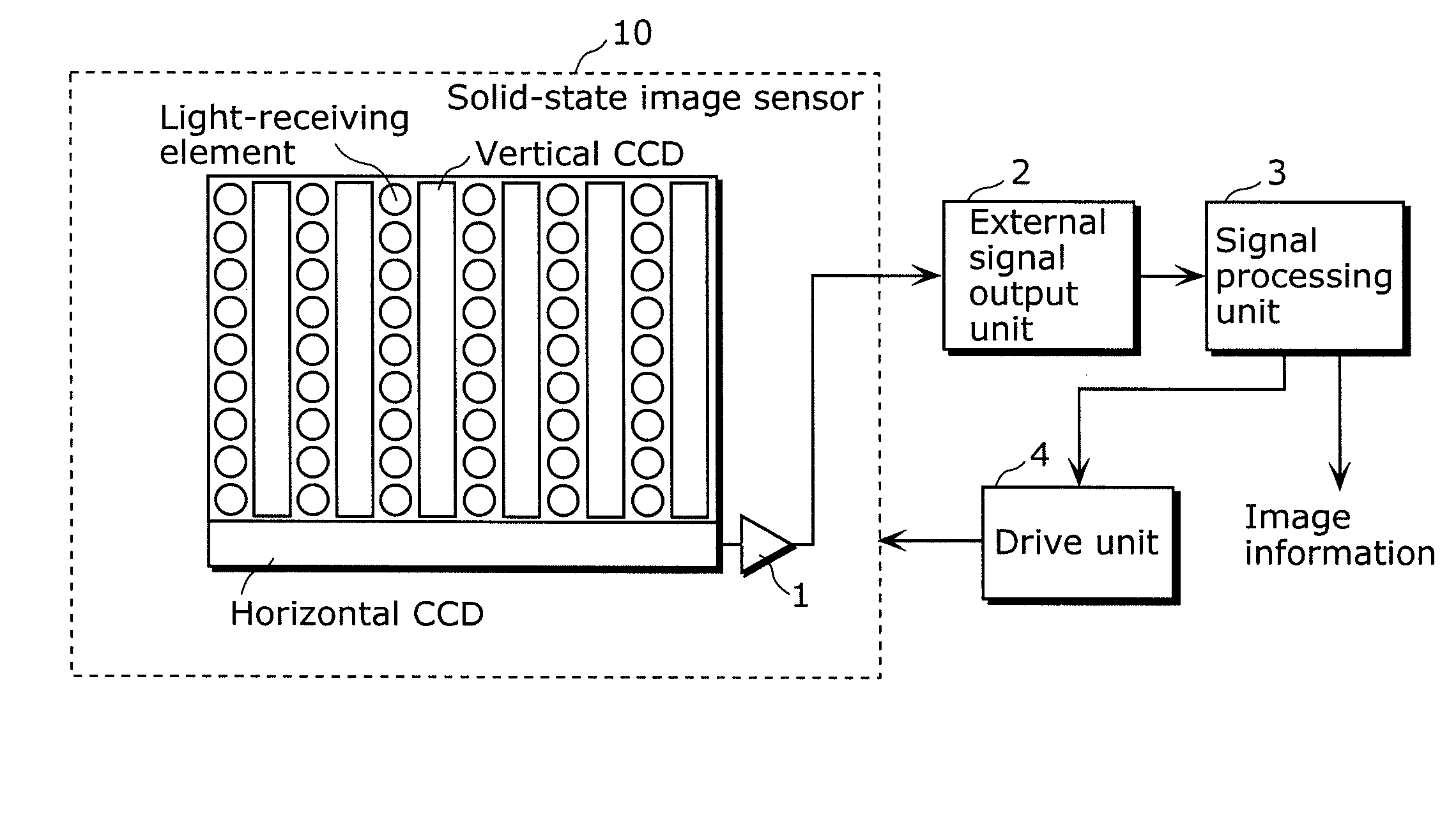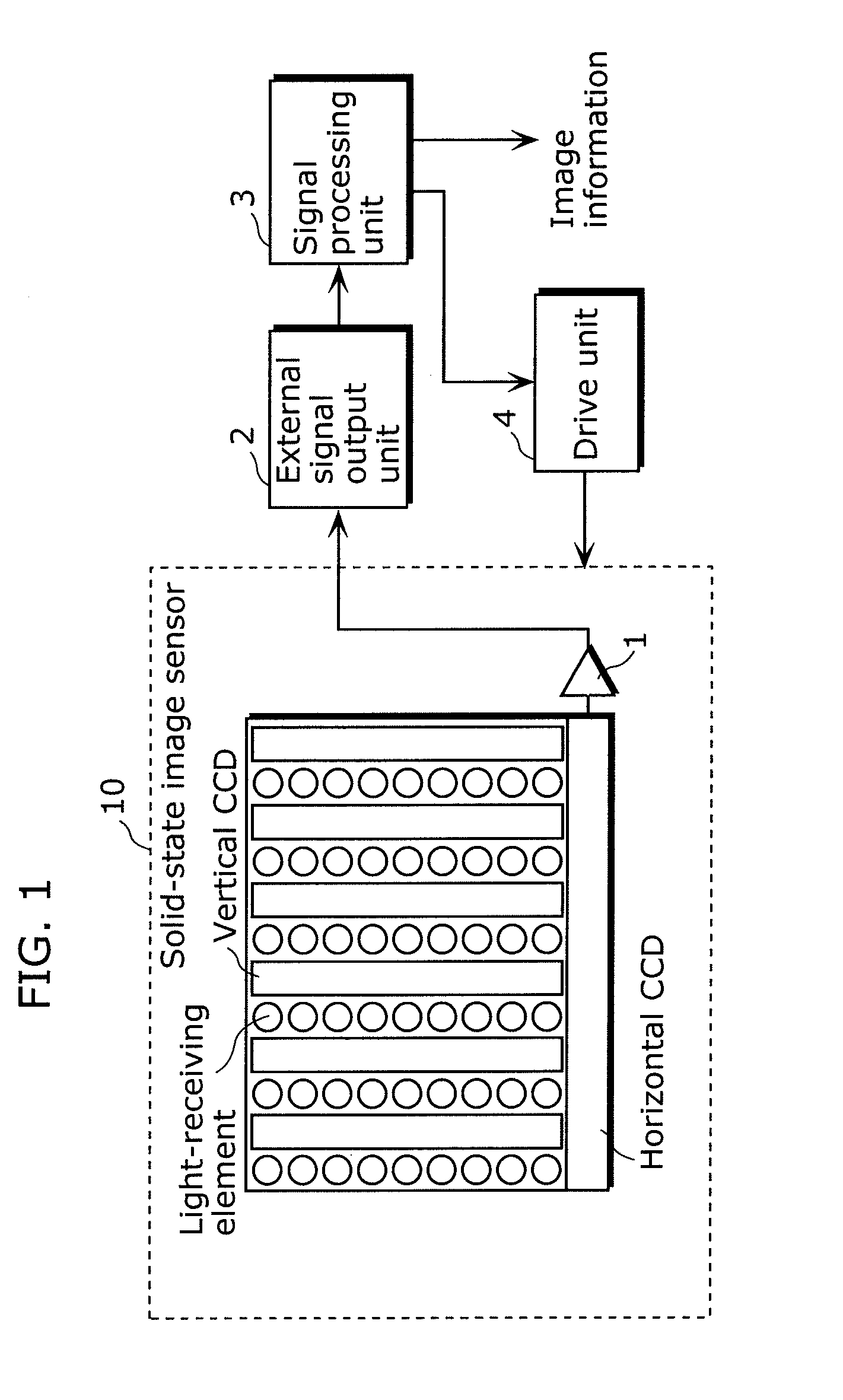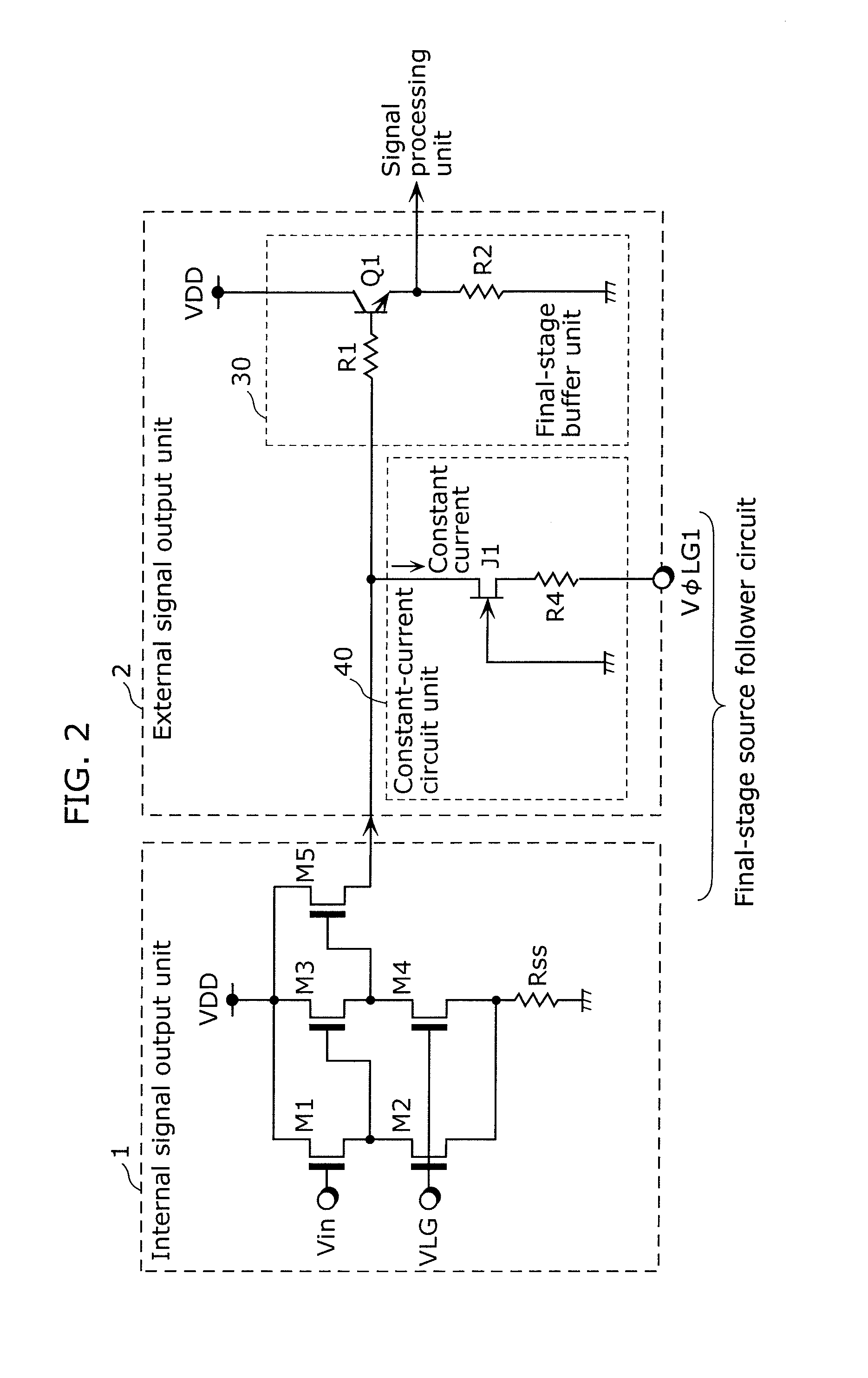Solid-state imaging device, driving method thereof, and camera
- Summary
- Abstract
- Description
- Claims
- Application Information
AI Technical Summary
Benefits of technology
Problems solved by technology
Method used
Image
Examples
first embodiment
[0053]Hereinafter, a solid-state imaging device in a first embodiment of the present invention shall be described with reference to the Drawings.
[0054]FIG. 1 is an outline diagram showing the configuration of the solid-state imaging device in a first embodiment of the present invention.
[0055]The solid-state imaging device in the present embodiment is built into the image-capturing device such as a video camera or a digital still camera, and outputs image information by photo-electric conversion of a subject image formed using a lens. As shown in FIG. 1, the solid-state imaging device includes a solid-state image sensor 10, an internal signal output unit 1, an external signal output unit 2, a signal processing unit 3, and a driving unit 4.
[0056]The solid-state image sensor 10 is a semiconductor device that is driven by the driving unit 4, and which outputs, in a predetermined sequence, from the internal signal output unit 1 to the external signal output unit 2, using plural vertical ...
second embodiment
[0095]Hereinafter, a solid-state imaging device in a second embodiment of the present invention shall be described. First, the configuration shown for the solid-state imaging device in the present embodiment is the same as that in FIG. 1 except for the parts described in FIG. 3 to be discussed later.
[0096]Next, FIG. 4 is an outline diagram showing the configuration of a signal output unit of the solid-state imaging device in the second embodiment of the present invention.
[0097]In FIG. 4, the internal signal output unit 1 in a solid-state image sensor including light-receiving elements is configured of three-stages of source follower circuits using the MOS transistors M1 to M5. M1, M3, and M5 are drive transistors and M2 and M4 serve as load transistors which are the current supply units for operating the drive transistors M1 and M3. Furthermore, the drains of the respective drive transistors M1, M3, and M5 are connected to the power terminal VDD. Furthermore, the respective gates of...
third embodiment
[0117]Hereinafter, a solid-state imaging device in a third embodiment of the present invention shall be described.
[0118]FIG. 7 is an outline diagram showing the configuration of the solid-state imaging device in a third embodiment of the present invention. In the diagram, compared to FIG. 1, a solid-state image sensor 11 is included in place of the solid-state image sensor 10. In the solid-state image sensor 11, a peripheral circuit 6 and a bias voltage generating circuit 7, whose description were omitted in the solid-state image sensor 10, are clearly specified. The peripheral circuit 6 is, for example, a timing generator, and generates horizontal transmission pulses Vφ1 to Vφ6, and horizontal pulses Hφ1 and Hφ2. The bias voltage generating circuit 7 generates a bias voltage and supplies this to the peripheral circuit 6.
[0119]It should be noted that the remaining device configuration is the same as in the solid-state imaging device in the second embodiment described using FIG. 4.
[0...
PUM
 Login to View More
Login to View More Abstract
Description
Claims
Application Information
 Login to View More
Login to View More - R&D
- Intellectual Property
- Life Sciences
- Materials
- Tech Scout
- Unparalleled Data Quality
- Higher Quality Content
- 60% Fewer Hallucinations
Browse by: Latest US Patents, China's latest patents, Technical Efficacy Thesaurus, Application Domain, Technology Topic, Popular Technical Reports.
© 2025 PatSnap. All rights reserved.Legal|Privacy policy|Modern Slavery Act Transparency Statement|Sitemap|About US| Contact US: help@patsnap.com



